Living and Nonliving Things Teaching Resources
Make teaching about living and nonliving things easy this school year with printable worksheets, sorting activities and more teaching resources created by teachers, for teachers!
This curated collection of elementary science teaching resources covers a range of ideas for teaching students classification, the needs of living things and more. Each resource has undergone rigorous review by a member of the Teach Starter teacher team to ensure it's ready to be used in your classroom. You'll find Common Core-aligned resources, editable options, and resources already differentiated for you to make science lesson planning easier!
Looking to get started on teaching about living and nonliving things, or just need more ways to make this science topic more engaging in your classroom? Read on for a primer from our teacher team, including definitions to use with your class and how to explain the difference between living and nonliving things.
What Is a Living Thing? A Kid-Friendly Definition
Looking for a simple way to explain the meaning of "living thing" to your students? Let's start with a kid-friendly definition from our teacher team.
A living thing is something that is alive. That may seem obvious, but not all living things show signs of life in the same ways. Most humans speak, for example, and most humans and animals move. Plants, on the other hand, need help from other living things or the wind to move, and they never make a sound!
There are some things that they all have in common, though! Each living thing has the following characteristics:
- Cellular Organization — Living things are made up of one or more cells. Cells are the basic units of life and perform all of the functions necessary for life.
- Response to Stimuli — Stimuli is a big word for little kids, but the concept is fairly simple. This just means that living things can respond to changes in their environment, such as light, temperature or touch.
- Homeostasis — This big word applies to the ability of living things to keep themselves working properly, even when there are changes in their external environment. For example, when the human body sweats because it is hot, it's experiencing homeostasis.
- Metabolism — Yup, another big, new vocabulary word! Living things need energy to perform life functions such as growing or reproducing. They get this energy through the process of metabolism.
- Growth and Development — Living things are all capable of growing and developing over time.
- Reproduction — Living things are able to produce offspring through either sexual or asexual reproduction.
What Is a Nonliving Thing?
A nonliving thing, of course, is the polar opposite of one that's living! It doesn't have any of the characteristics of a living thing, but it may still be important in our ecosystem and help living things survive.
Nonliving things are categorized into three main categories
- Physical objects (such as rocks, water, and air)
- Chemical compounds (such as water and carbon dioxide)
- Forces and energy (such as gravity and sunlight)
Fun Living and Nonliving Things Activities for the Classroom
Looking for some fun activities to help students better understand this concept? This collection is full of inspiration, and here are some more fun ideas from our teacher team:
- Habitat Building Challenge — Break your class into small groups, and provide each group with a shoebox and a collection of craft supplies. Challenge the groups to create a habitat for a specific living thing from the materials on hand, encouraging them to think about the needs of their living thing — such as food, water and shelter — and how the nonliving items can play a role in providing for the creature's survival.
- Planting Experiment — It's an oldie but a goodie! Ask students to design an experiment to test how different nonliving factors, such as light and temperature, affect the growth of a bean plant. Encourage students to make predictions and record their observations over time.
Read on for answers to some common student questions and more about this science topic!
How Do Living and Nonliving Things Interact?
Despite their differences, there are a host of ways that living things and nonliving things interact with one another.
- Living things need nonliving things to survive. Without all the nonliving things on our planet, all living things would be unable to keep living! Plants need sunlight, water and nutrients from the soil to grow, while animals need air, water and food to live.
- Nonliving things can have an impact on living things. For example, extreme temperatures or weather conditions can affect the behavior and survival of animals.
- Living things can also have an impact on nonliving things and change nonliving things. This can be both positive and negative. For example, plants help to regulate the amount of carbon dioxide in the atmosphere through the process of photosynthesis. This is positive! Beavers build dams that can change the flow of a river, creating new habitats for other animals. But human activity has also been proven to damage the ecosystem, resulting in climate change.
- Nonliving things can also influence the behavior of living things. For example, the presence of light can affect animals' circadian rhythms, influencing when they sleep and when they are active.
How Are Living and Nonliving Things Alike?
There's plenty that sets them apart, but are there any things these two distinct groups have in common? It's a good question, and the answer is yes!
- Both living and nonliving things occupy space and have mass.
- Both types of things can be affected by the same physical laws, such as gravity and friction.
- Both types interact with one another in a variety of ways, such as through chemical reactions or physical contact.
- Both living and nonliving things can change over time.
- Plus Plan
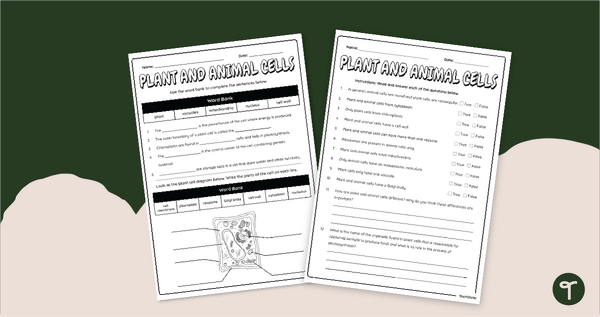
Plant & Animal Cells and Organelles Worksheet
Learn about the differences between plant cells and animal cells with a printable cells and organelles worksheet.
- Plus Plan
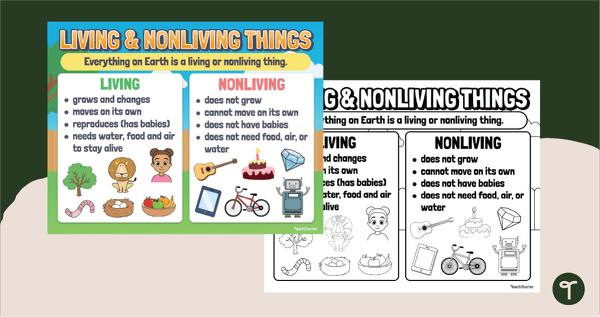
Living and Non-Living Things Posters
Highlight the differences between living and non-living things with an illustrative Living vs. Nonliving Things Anchor Chart
- Plus Plan

Female, Male and Baby Animals Worksheet
Identify the names of female animals, male animals and their babies with an Animal Family Worksheet.
- Plus Plan
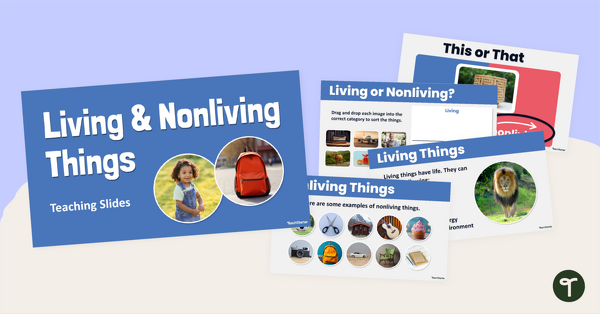
Living and Non-Living Things Slide Deck
Discover living and nonliving things with an engaging Living vs. Nonliving things teaching slide deck.
- Plus Plan
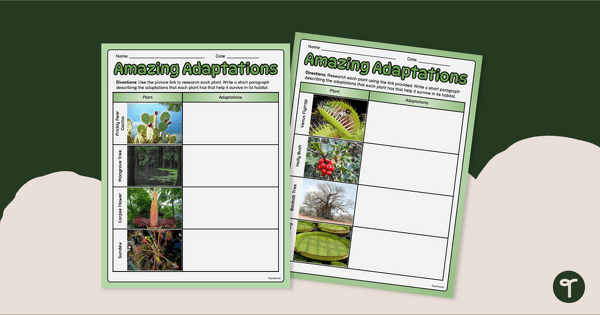
Plant Adaptations Webquest Activity
Research and learn about the amazing adaptations of eight unusual plants with an interactive webquest research activity.
- Plus Plan
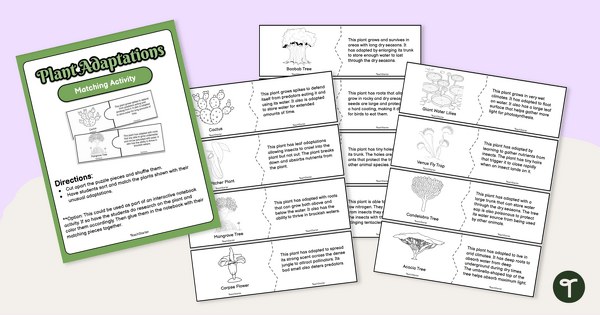
Plant Adaptation Puzzles - Matching Activity
Match plants with their unique adaptations using a printable puzzle-matching activity.
- Plus Plan
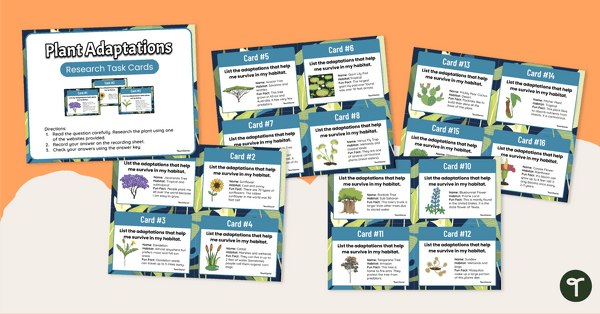
Plant Adaptations - Research Task Cards
Research behavioral, structural, and physiological adaptations with printable plant adaptation task cards.
- Plus Plan
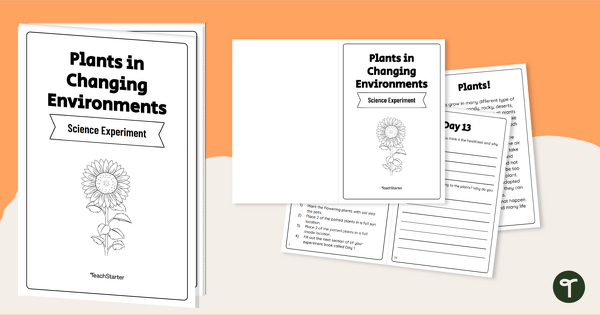
How Does the Environment Affect Plants? Science Experiment
Investigate the effect of the environment on plant life with a no-cut printable science experiment mini-book.
- Plus Plan

Who Would Win? - Plant Adaptation Interactive Game
Identify plants and plant adaptations that allow for survival in different environments with an exciting “Who Would Win?” showdown game!
- Plus Plan
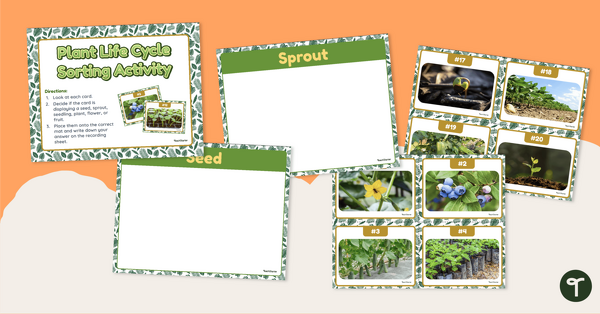
Plant Life Cycle Sorting Activity
Help your students identify the stages in a plant’s life cycle with a sorting activity..
- Plus Plan
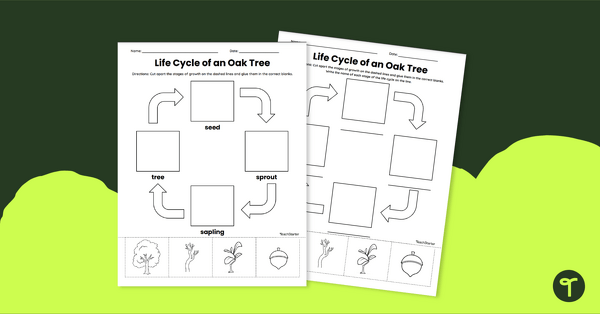
Life Cycle of an Oak Tree Worksheet
Sequence the life cycle of an oak tree with this cut-and-paste worksheet.
- Plus Plan
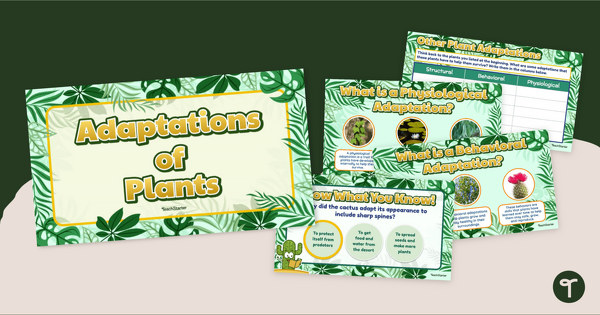
Plant Adaptations Slide Deck
Explore different plants' behavioral, structural, and physiological adaptations with an interactive slide deck.
- Plus Plan
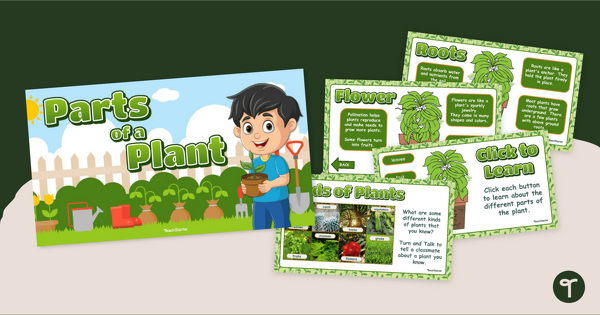
Parts of a Plant - Instructional Slide Deck
Explore the features and functions of the different parts of a plant with an interactive teaching presentation.
- Plus Plan
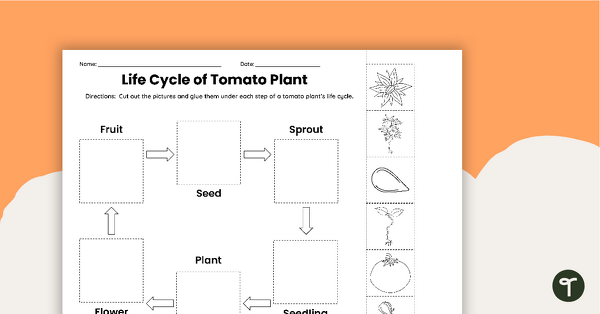
Tomato Plant Life Cycle - Cut and Paste Worksheet
Learn about the life cycle of a tomato with a cut-and-paste sequencing worksheet.
- Plus Plan
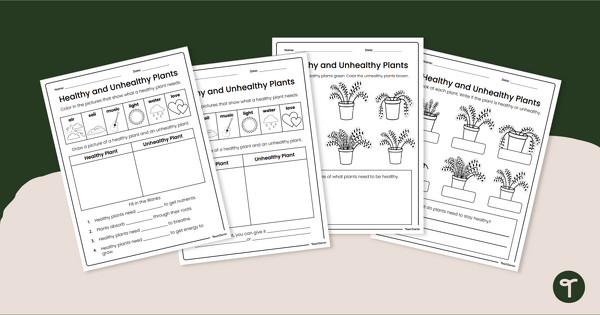
Healthy and Unhealthy Plants Worksheets
Discover what plants need to grow to be healthy with differentiated worksheets about healthy and unhealthy plants.
- Plus Plan
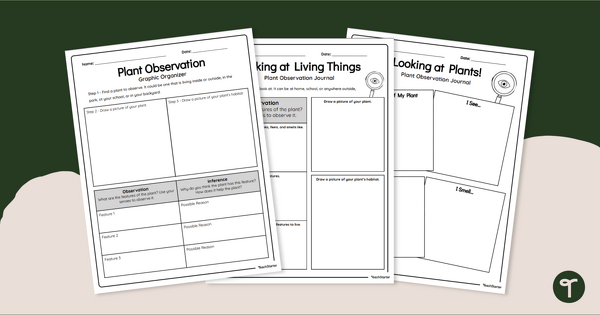
Plant Journal Observation Worksheets
Observe and record information about the features of plants with a plant journal worksheet.
- Plus Plan
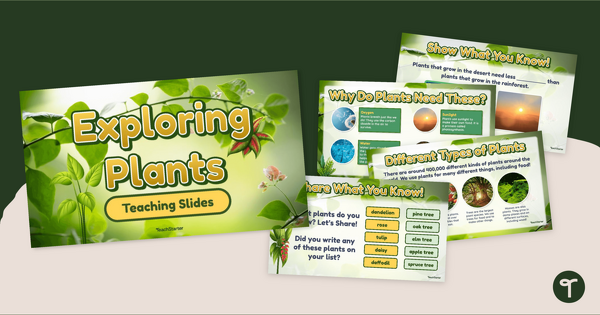
Exploring Plants - Teaching Slides
Explore the characteristics of plants in our environment with an interactive teaching slide presentation.
- Plus Plan
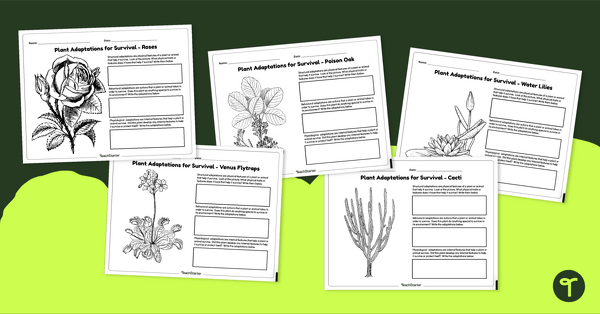
Plant Adaptations Worksheets
Learn about different plants' behavioral, structural, and physiological adaptations with printable plant adaptation worksheets.
- Plus Plan
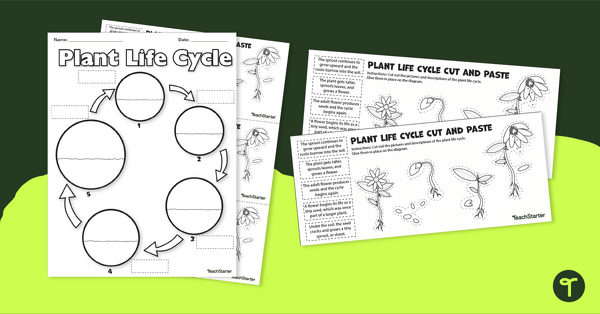
Plant Life Cycle - Cut and Paste Worksheet
Help your students remember the life cycle of a plant with a cut and paste life cycle worksheet.
- Plus Plan
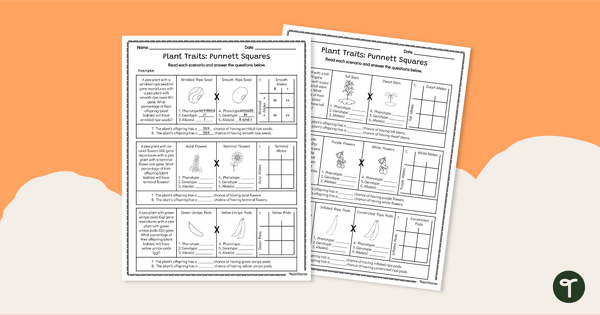
Punnett Square Worksheets
Predict the possible outcomes of combined traits of plants with a printable Punnett Square worksheet.
- Plus Plan
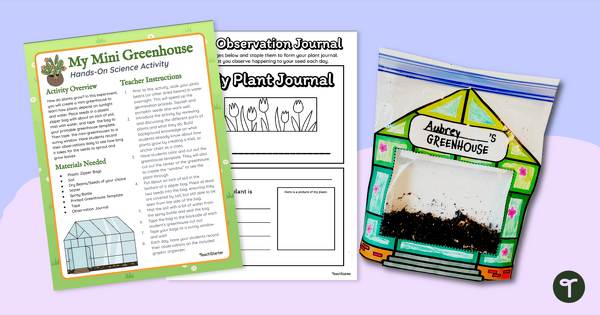
Growing Beans in a Bag - Kindergarten Science Experiments
Use our Kindergarten Science Experiments to “Grow” your students’ knowledge of plant life cycles with a printable greenhouse template and investigation.
- Plus Plan
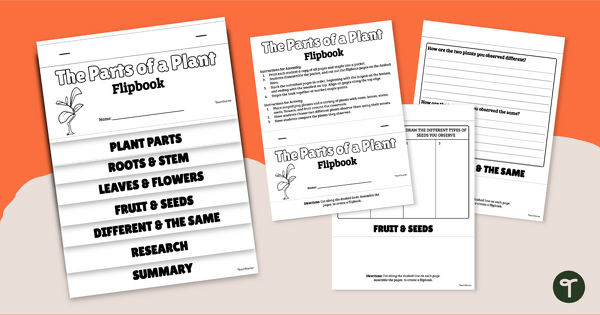
Parts of a Plant - Observation Flipbook
Draw and write to record observations of the parts of a plant with a printable plant flipbook.
- Plus Plan
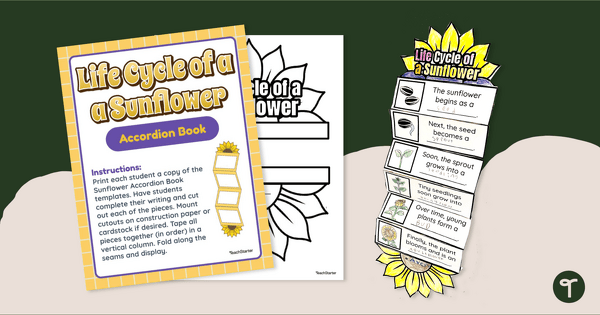
Life Cycle of a Sunflower Accordion Book
Get crafty and teach your students the stages in the life cycle of a sunflower with a fun accordion book science craft.
- Plus Plan

Anchor Charts - Parts of a Plant for Kids
Provide your students with visuals and information highlighting the parts of a plant with a pack of printable posters for your classroom.
- Plus Plan
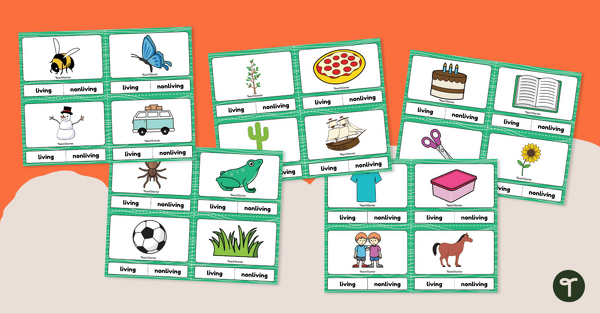
Living and Nonliving Things – Clip Card Activity
Differentiate between living and nonliving things with this set of 24 clip cards.
- Plus Plan
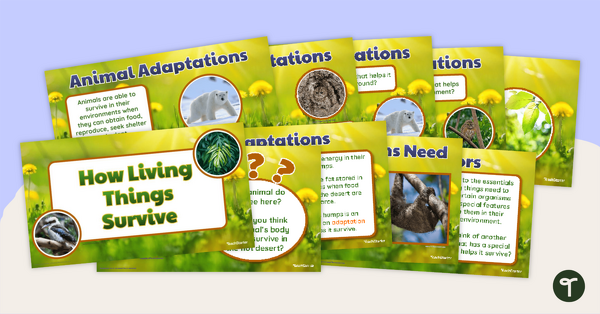
How Living Things Survive – Teaching Presentation
Use this 13-slide teaching presentation to teach your students about the physical characteristics of animals and plants, which help them meet their basic needs.
- Plus Plan
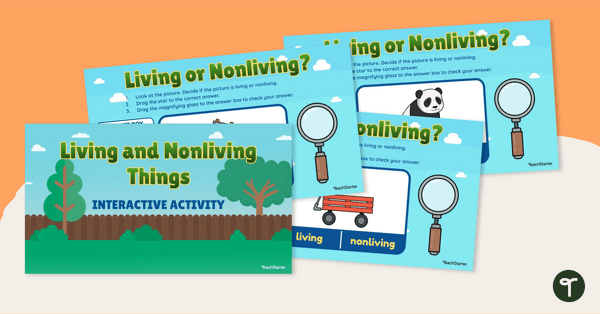
Living or Nonliving Things - Interactive Activity
Identify living and nonliving things with this self-checking interactive activity.
- Free Plan
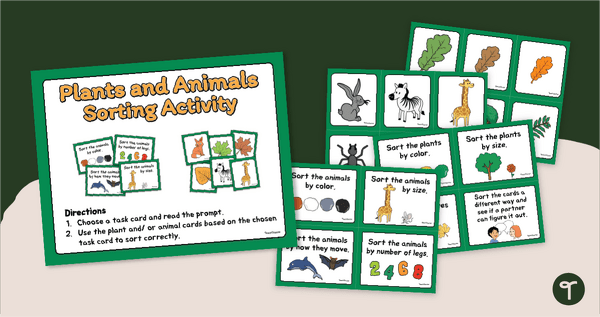
Grouping Plants and Animals – Sorting Activity (K-1)
Sort plants and animals using different characteristics with a set of task cards and picture cards.
- Plus Plan
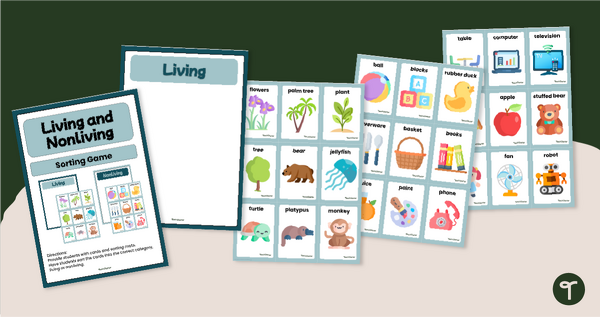
Living vs Nonliving Things - Sorting Activity
Sort biotic vs. abiotic things and discuss their characteristics with a hands-on living and nonliving things picture sort.
- Plus Plan
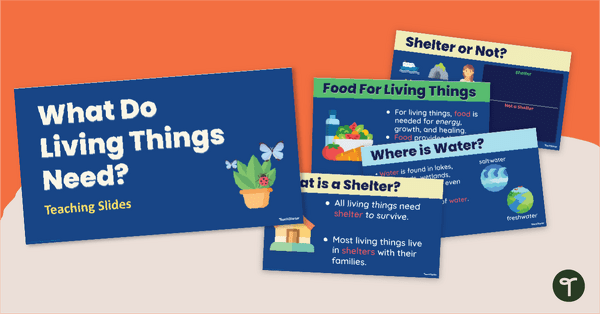
What Living Things Need to Survive - Teaching Slides
Teach your students what animals, plants, and humans need to survive with an engaging, interactive teaching slide deck.
- Plus Plan

Pets and Their Needs - Worksheet
A worksheet for students to identify the four basic needs of living things.
- Plus Plan
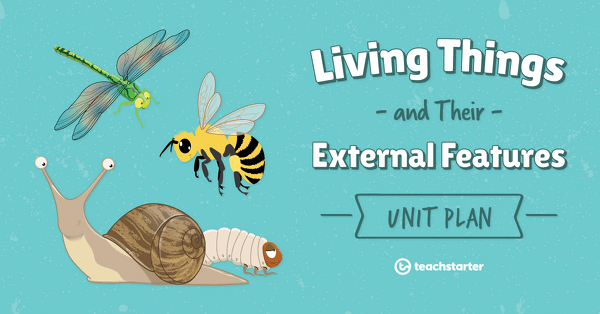
What Did We Find On Our Playground Safari?
A 60 minute lesson in which students will represent and communicate observations and ideas in a variety of ways.